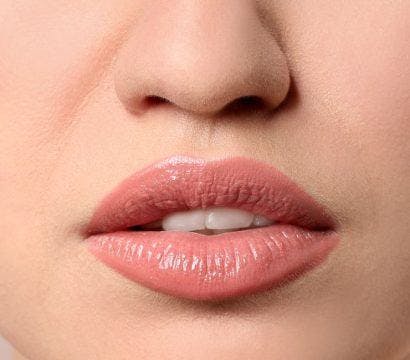From ancient tooth extraction methods during the Middle Ages to modern dental solutions like 3D imaging, dentistry has undergone a remarkable evolution. In recent years, countless technological advances have even revolutionised dental services, providing improved patient care. Explore these trends and innovative treatments to help you achieve the confident, radiant smile you’ve always wanted!
1. Digital Impressions

For years, dentists have relied on two-dimensional X-rays to examine a patient’s mouth. While valuable, this imaging solution only provides a limited view of a patient’s dental structure. Enter: digital impressions.
With the use of intraoral cameras, dentists can now view real-time imagery on a screen. Digital scans can identify problems like tiny cracks and changes in oral tissue that might be too small for traditional X-rays to detect. This technological advancement enhances diagnostic capabilities and offers a more comprehensive overview of one’s oral health.
2. 3D Scanning and Printing
Advanced dental solutions, like 3D printing, use intraoral scanners to generate precise 3D images of your teeth. They deliver more accuracy for creating dental appliances like implants, bridges, and crowns, ensuring a customised fit for each patient.
Studies from the Journal of American Dental Association suggest that 3D scanning accelerates the workflow involved in making dental impressions. As technology continues to progress, the idea of creating 3D-printed teeth resistant to infection becomes an exciting possibility to look forward to.
3. Laser Dentistry
For those searching for a dental innovation that offers a more comfortable and efficient experience, laser dentistry might be an option. This technique uses a high-precision laser to treat oral conditions by targeting the damaged tissue while preserving the surrounding area. The book Principles and Practice of Laser Dentistry by Dr Robert A. Convissar suggests that the approach can result in reduced bleeding, swelling, and discomfort after a procedure, cutting patient recovery time significantly.
4. Smart Toothbrushes

Just as your phone, entertainment system, and other devices embrace smart technology, your oral hygiene can “smarten up,” too! Thanks to dental solutions like smart toothbrushes, you can track plaque buildup, monitor toothbrushing time, and even evaluate the quality of your breath and saliva. Now, you can look forward to cleaning your teeth with intuitive technology that makes brushing enjoyable and elevates preventive care to a whole new level.
5. Artificial Intelligence
Artificial intelligence (AI) has revolutionised various aspects of daily life, from shaping social media algorithms to improving workflow efficiency. In dentistry, AI-driven solutions are also becoming more prevalent. For instance, AI-powered robots can now assist dentists during surgical procedures and minimise the risk of human error.
Beyond robotic surgery, the role of AI-powered tools in dental applications includes:
- Detecting root fractures and periapical lesions
- Assisting in patient scheduling and care
- Managing drug interactions
- Providing prognostic diagnosi
6. Augmented Reality and Virtual Reality
Augmented reality (AR) and virtual reality (VR) are tech no longer just reserved for video games and selfie filters; they now also have a significant impact on dentistry.
AR can enhance the patient experience by simulating different treatment options, allowing you to visualise the outcome of a procedure on your teeth. Meanwhile, VR uses a similar technology to create lifelike simulations of procedures, incorporating pain distraction techniques to help you feel more at ease.
7. Vibration Therapy
Vibration therapy employs high-frequency vibration to stimulate tooth movement. Here, patients use a handheld oscillating device for five to 20 minutes daily to facilitate treatment. This innovative solution offers a more efficient and time-saving step in orthodontics.
8. Clear Aligners

For many orthodontic patients, traditional metal braces have been the go-to treatment for the longest time. But for those seeking a comfortable and discreet alternative, dental aligners like ClearCorrect offer a more ideal solution. Yes, they can move teeth into their proper positions, but without painful and bulky wires and brackets.
The technology behind ClearCorrect provides your doctor access to advanced 3D animation and imagery of your teeth through an intuitive planning tool. This software also allows them to review and modify your treatment plan according to your needs.
There’s no telling what revolutionary dental solutions the future will bring. So, always stay updated on the latest teeth tech to help you achieve optimal oral health. The future holds promising innovations that will give you even more reason to showcase a brilliant and confident smile!
References:
Agrawal, P., & Nikhade, P. (2022). Artificial intelligence in dentistry: past, present, and future. Cureus.
Convissar, R. A. (2023). Principles and Practice of Laser Dentistry.
Fahim, S., Maqsood, A., Das, G., Ahmed, N., Saquib, S. A., Lal, A., Khan, A. A., & Alam, M. K. (2022). Augmented Reality and Virtual Reality in Dentistry: Highlights from the Current Research. Applied Sciences, 12(8), 3719.
Mayama, A., Seiryu, M., & Takano‐Yamamoto, T. (2022). Effect of vibration on orthodontic tooth movement in a double blind prospective randomized controlled trial. Scientific Reports, 12(1).
Nešić, D., Schaefer, B. M., Sun, Y., Saulačić, N., & Sailer, I. (2020). 3D printing approach in Dentistry: The future for Personalized oral soft tissue regeneration. Journal of Clinical Medicine, 9(7), 2238.
Patzel, S. B. M., DMD, Lamprinos, C., DDS, Stampf, S., & Att, W., PhD. (2014). The Time Efficiency of Intraoral Scanners. The Journal of American Dental Association, 145(6).



